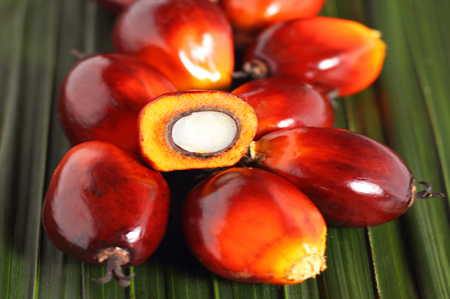Palm Oil Prices Hit Nine-Month Lows
Category: Oilseeds
 (The Wall Street Journal) – The global palm oil market is taking a beating from forecasts of record soybean and corn crops this year, as prices of the world’s most widely-used vegetable oil have hit nine-month lows.
(The Wall Street Journal) – The global palm oil market is taking a beating from forecasts of record soybean and corn crops this year, as prices of the world’s most widely-used vegetable oil have hit nine-month lows.
On Thursday, benchmark crude-palm oil futures on the Bursa Malaysia closed at 2,290 ringgit ($718) per metric ton, down as much as 2.6% this week. At one point, they hit their lowest levels since October 4, as soybean and corn prices fell to multiyear lows amid expectations of a bumper crop.
As a result, soybean and corn-oil prices are also down, narrowing the price premiums these rival edible oils command over palm oil. Demand for palm oil has been hurt as a result.
Traditional vegetable oils like soybean oil and groundnut oil are preferred choices for consumers in India, China and other large importers.
Citi Futures specialist Sterling Smith noted Wednesday that the premium of soybean oil over palm oil has been reduced to just $89.56 per ton—far lower than the one-year average of $117.44, as well as the two-year average of $219.38.
Such concerns have eclipsed any improvement to market sentiment brought by stronger Malaysian palm-oil exports, which rose 11%-14% from July 1 to July 15 compared with a month earlier, reversing from an on-month decline of 7.8% to 8.3% in the same period in June. Meanwhile, the Indonesia Palm Oil Association estimated that June exports rose 5% from May.
Indonesia and Malaysia are the world’s two biggest producers of palm oil, together accounting for 85% of the market, which is used in a range of consumer products from toothpaste to biscuits.
The robust palm data came on the back of bullish figures last week showing lower Malaysian June palm-oil production and reduced end-month stockpiles. Still, benchmark Malaysian crude-palm oil futures closed 0.7% lower on Thursday.
The declining palm-oil prices contrast with the market rally during the first quarter, when prices jumped to an 18-month high in March amid very dry weather in Indonesia and Malaysia, which triggered fears of lower yields. Prices are now 21% lower from the highs hit in March.
Despite the market’s lull, some analysts say changing weather conditions could move prices higher in the coming months.
Commerzbank said in a note Wednesday that the weather “can still cause problems” for the production of oilseeds in the U.S., while any additional imports to China could provide some upside to prices.
Palm oil production could also fall if the El Niño weather system sets in later this year




